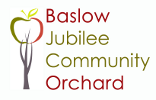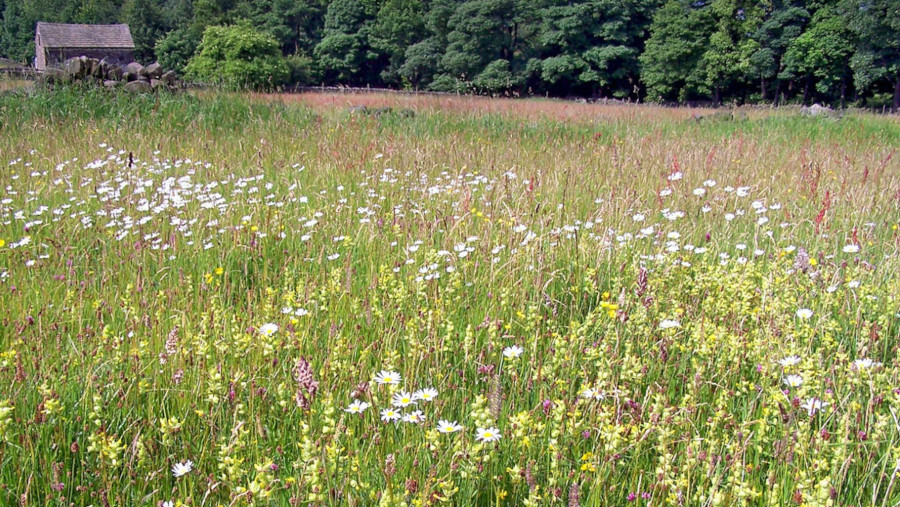As of 2018, there are very few wildflowers present and the grass is very vigourous. The objectives are to add flowering plants and to reduce grass vigour, over several years.
We will introduce flowering plants as plugs. Some ox-eye daisies and cow clips were planted in 2018. In spring 2019 we will plant about 400 plugs of about 10 species from a commercial nursery. We will also grow our own plugs from locally collected wild seeds and add these later.
By removing the hay at the end of the summer fertility will reduce and flowering species will be able to compete better with the grasses. Progress will be faster with introduction of yellow rattle – we have scattered thousand of these seeds.
The ideal might be like the photograph below: the hay meadows near the Grouse pub above Grindleford. There would be less tall grass, and a wide variety of flowering plants. Different plants will flower in succession, through the spring and summer. The yellow flowers in the foreground are yellow rattle: note that the grass is less vigorous here.
As with the orchard itself, we should think of the meadow project as being a journey of several years. A traditional meadow may be hundreds of years old, and the species of plants and animals will have settled over this extended period. We will artificially introduce flowering plants to kick-start this process, and we can expect that it will take some time for a stable pattern to develop.
The web is full of good advice on establishing new meadows (links below). These websites cover meadows of different scales: ours of course is very small. Advice includes:
-
Removing top-soil to reduce fertility. This is likely to be impractical for us, and perhaps too disruptive.
-
Removing weeds. Fortunately our grass area does not suffer from weeds such as dock, thistle and stinging nettle. There are some nettles at the base of the surrounding hedges which will be controlled by mowing the adjacent paths.
-
Cut grass back hard prior to applying seeds. This we should do.
-
Introduce seeds by bringing “green hay” from existing hay meadows and strewing it onto a prepared surface. We could do this but only if we could identify a willing and suitable supplier. (No ideas at present).
-
Grow plants from locally collected seeds as “plugs” (young plants grown in trays). We can sow the seeds collected one autumn and plant the plugs the next autumn. Get in touch of you would like to help.
-
We can source commercially grown wild flower plugs to plant in early 2019.
-
If planting seeds, then rotavate or strim to expose bare soil. This could be practical in small areas.
-
Spread seeds. We have already harvested certain amounts of local wildflower seeds..
-
Plant yellow rattle seeds to reduce the vigour of the grass (see here). We have collected thousands of yellow rattle seeds and scattered these in autumn 2018.
Links to websites with advice on creating meadows
- How to restore an orchard meadow – Country Life September 2014
- Management of Meadows and Grassland – Emersgate Seeds website
- Seeding new Coronation Meadows – Coronation Meadows website
- Start a wildflower meadow – RSPB website
- Coronation Meadows – Plantlife website
- Wildflower meadow: establishment – RHS website
- Cumbria Wildflowers – who will supply plugs for us.

